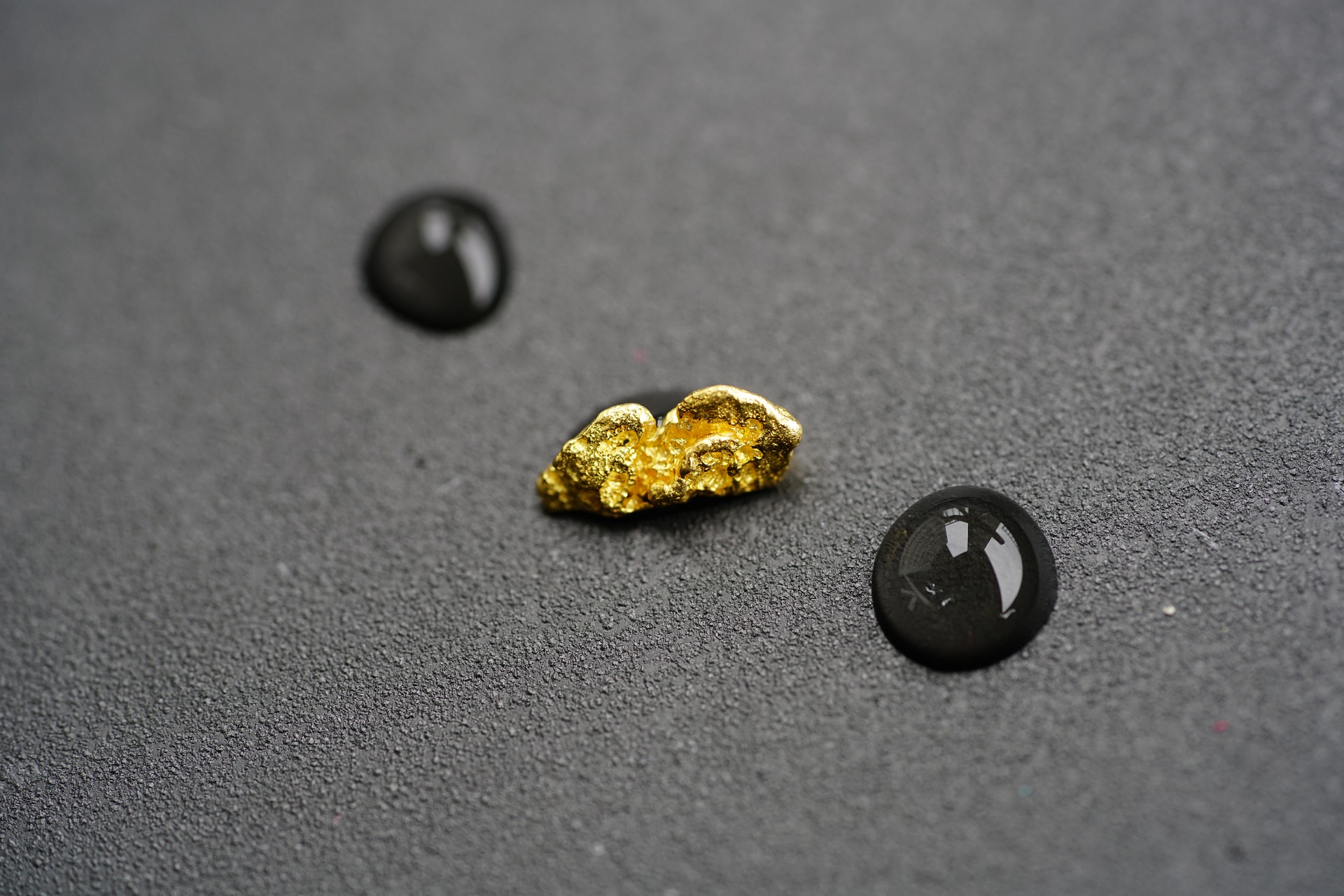Gold, for thousands of years the symbol as an image of the sun and light, stands for wealth – due to its color, its shine and its rarity gold has always been appreciated – an interjection by Dr. Peter Riedi, EM Global Service AG, Principality of Liechtenstein.
Even today, gold has lost none of its fascination. Gold is in particular demand as an investment in the form of coins, bars and jewelry. Because of its physical properties, gold is in great demand in the medical, electronics and IT sectors. EM Global Service AG, at home in the Principality of Liechtenstein in the heart of Europe, has been successfully active in the commodities and precious metals market for over ten years. From a monetary point of view, physical gold is a liquid material asset and thus enjoys the reputation of being a secure protection against inflation. Another plus point, gold is not tied to a promise of payment from a bank or government. Unlike money, it cannot simply be multiplied by central bank decree, which is what is happening dramatically in the financial crisis. On the contrary, deposits are limited and the extraction of gold is becoming increasingly costly. On the other hand, demand is rising permanently.
Gold – a favorite among the elements
Elements are built up uniformly in themselves, from the smallest particles, the atoms. On chemical ways atoms are not divisible and 90 atoms were found in nature, their frequency in nature is very different. The earth’s crust consists of a rock, water and air shell, half of oxygen, a quarter of silicon. The elements occur in chemical compounds. For example, the elements hydrogen and oxygen, which both fall into the grouping of gases, form water in liquid form. Altogether 24 elements occur in nature as minerals and are divided into transition metals: iron, ruthenium, osmium, cobalt, rhodium, iridium, nickel, palladium, platinum, copper, silver, gold, zinc, mercury, semimetals and nonmetals, carbon, tin, lead, phosphorus, antimony, bismuth, sulfur, selenium, tellurium, arsenic.
The periodic table was presented independently by two researchers about 150 years ago and their teachings are still influential today. Gold has the atomic number 89 in group 11 of the periodic table and thus belongs to the so-called transition metals and to the pure elements. Pure elements participate only to a very small extent in the structure of the earth. After the weathering of a primary deposit, gold and platinum, for example, can accumulate on soaps. In the low-temperature pneumatolytic phase, solutions impregnate the subsidiary rock. Direct volcanic influence, for example in fumaroles, deposits sulfur.
Gold is a chemical element with Latin name „aurum“, from which the chemical symbol „Au“ is derived. Gold is an element like all others and yet quite different, it refuses almost all chemical reactions, is malleable and durable like no other element. Gold has no perceptible fissility. The fracture is hooky, the color golden yellow, the precious metal can be hammered and rolled into thin layers. Then it is translucent blue or green. The density of pure gold is 19.3 g/cm². Pure gold is too soft for further processing and can be mixed with other metals such as copper, palladium or silver in alloys, the chemical and physical properties change. Gold generally has a silver content of 2 – 22 percent, thus gold achieves a lighter hue. Platinum or copper is also partially contained in gold. Silver-rich gold with a silver content of 20 percent was already mentioned by Pliny. Pure gold is a very resistant metal, it is not attacked by atmospheric oxygen, nor by acids. It is only soluble in aqua regia (a mixture of nitric acid and hydrochloric acid).

Precious metal gold: extraction – sustainable and innovative
Gold is found as mountain gold on primary deposits and as placer gold on secondary deposits. In old mountain hollows, mountain gold is found bound to hydrothermal veins. Gold is also found in volcanic rocks and in veins. Ore companions here are pyrite, zinc blende, pale ore and many silver minerals, tellurides and rarely selenides. The oldest method of gold extraction is gold washing, already the Romans washed in pure gold. For a long time, mixing gold-bearing sand and crushed rock with water dissolved only 50 percent of the gold components of mud and sand. Chemical processes increase this percentage in gold recovery. The amalgamation process, which is based on the solubility of gold by mercury and is associated with high risks for humans and the environment, is controversial. The call for sustainable mining methods is coming into focus. One possibility is so-called phyto-mining, in which, for example, plants are used to extract metals from the earth and make gold mining environmentally friendly and sustainable.
Gold deposits – gold age

Gold as a coveted commodity because it is rare attracted people thousands of years ago. Legend has it that the legendary Lydian king Croesus introduced gold as currency in 560 B.C., but gold was known as early as 4,000 B.C. in southern Mesopotamia, and by the Egyptians in 3,000 B.C. The gold rush in California resulted from the discovery of gold placers in the Sacramento Valley in 1849, and gold panners mined gold for the equivalent of 24 billion today. From all over the world came 90,000 prospectors hoping to make their fortune and found 570 tons of gold in the riverbeds of California. In 1847, the gold content was 1 gram per ton of sand. In 1851, gold was discovered in Australia. Huge placer deposits were discovered on the Witwatersrand near Johannesburg in South Africa. Siberia yields large quantities of gold and the Tauern gold comes from Salzburg. Young gold veins are found in Transylvania. Here probably the most beautiful gold specimens in Europe are found in the Verespatak. In total, 170,000 tons of gold are mined on all continents except Antarctica. The current annual production amounts to 2,500 tons.
What factors influence the price of gold?
According to a report by the World Gold Council, which conducted an analysis of annual data from 1990 to 2015, there are two main factors that influence consumer demand for gold (jewelry, bars and coins) over the long term. Demand for gold is primarily driven by income, which means that demand for gold increases with income levels. For example, if per capita income increases by 1 percent, the demand for gold increases by 1 percent. Second, by the price level of gold itself. This is particularly important in countries like India, which is one of the largest consumers of gold, with annual demand equivalent to about 25 percent of total physical demand worldwide.
For its part, demand as an investment has to do with the properties of gold. At the forefront is protection against volatility. All people who want to invest in gold or buy gold do so to protect themselves from volatility and uncertainty. Most investors see the appeal of gold as an asset for good times and bad. Lastly, the role of geopolitical factors should be mentioned. Gold usually performs well during geopolitical turmoil, and the current situation of uncertainty due to the as yet unassessable consequences of the Corona pandemic, have a positive impact on the gold price, as the demand for gold as a safe haven in which to safely invest one’s savings increases.
V.i.S.d.P.:
Dr. Peter Riedi
Economist & Precious Metals Expert
The author is responsible for the content.
Contact:
EM Global Service AG
Country road 114
FL- 9495 Triesen
Principality of Liechtenstein
Phone +423 230 31 21
Fax +423 230 31 22
Contact person:
Dr. Peter Riedi
info@em-global-service.li
www.em-global-service.li

Company description:
Located in the heart of Europe, EM Global Service AG designs and manages commodity and precious metal concepts. The range of services of EM Global Service AG includes the acquisition, custody and security of physical precious metals for the owners, the buyers. The company with her team builds on economic stability and secure it with reliability and discretion in asset custody in the heart of Europe. For more information, visit www.em-global-service.li


